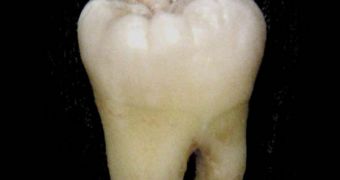Some of the most fundamental aspects of primate evolution are closely related to the timing of molar development and eruption, two scientists report in a new paper. Regardless of the species, from the largest to the smallest, all primates exhibit this correlation. The same thing holds true in humans as well, the team says. Knowing the time when molars appear allows researchers to determine a number of traits pertaining to that specific animal, including the gestation length, overall lifespan and birth spacing.
“Knowing the age when the first molar appears in the mouths of most primates allows researchers to predict a host of life history attributes, such as gestation length, age at [reproductive] maturity, birth spacing, and overall lifespan. Humans are unique among primates because our life histories are so slow and thus our molars emerge relatively late. Given that apes are our closest living relatives, understanding the broader context of when the characteristic slower development of humans evolved is of great interest,” Gary Schwartz says, quoted by PhysOrg.
He is an Arizona State University (ASU) College of Liberal Arts and Sciences School of Human Evolution and Social Change associate professor. Schwartz also holds an appointment in the university's Institute of Human Origins. He collaborated on the new work with colleague Jay Kelly, who is an associate professor in the Department of Oral Biology at the University of Illinois in Chicago. Kelly is also affiliated with the ASU Institute of Human Origins. The two published their research in the December 28 online early issue of the respected journal Proceedings of the National Academy of Sciences (PNAS).
“We've known quite a bit about the timing of molar development in chimpanzees, which is important because they are our closest living relative. However, we've known virtually nothing about when this important event occurs in other wild-living ape species – until now,” Kelly, the lead author, adds. “Like annual growth rings inside trees, the cells that produce teeth (both the enamel and underlying dentine) leave behind a trace of their presence, not as annual markers, but as growth lines that appear every day,” he reveals.
“We can […] calculate ages at first molar emergence from the fossils of early hominids that just happened to die while their first molars were erupting. The close correspondence between age at first molar emergence and the timing of life history events that we found in great apes and modern humans means that we can have confidence that first molar emergence ages in the early hominids will provide equally accurate knowledge about their life histories,” Kelly concludes.

 14 DAY TRIAL //
14 DAY TRIAL //